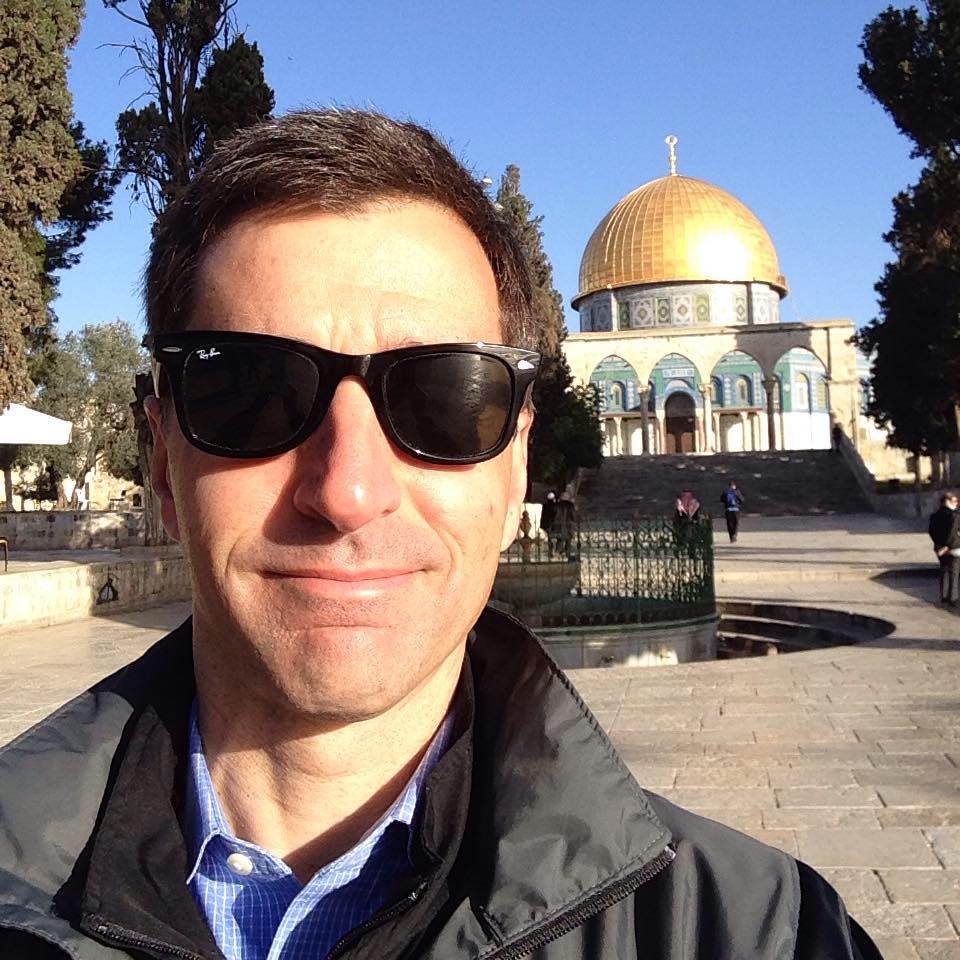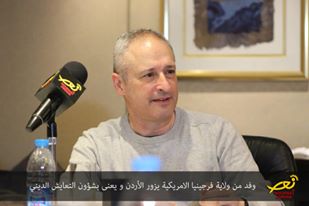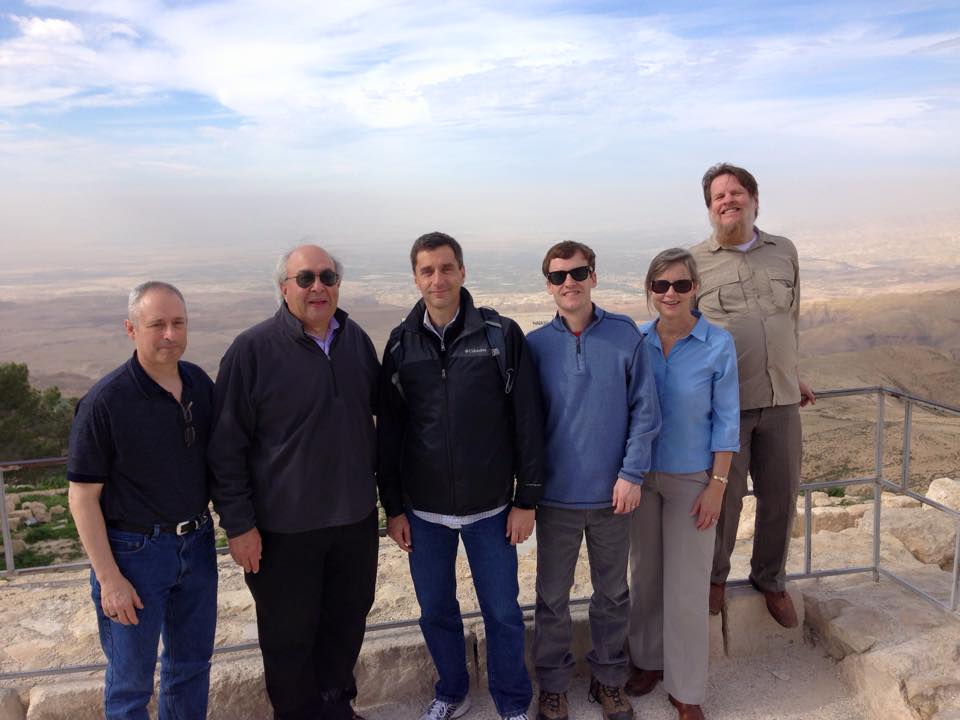By Jeff Brumley
It wasn’t Jim Somerville’s first visit to the Holy Land — or even his third or fourth.
But the 10-day journey in early February was the first he had made with Muslim and Jewish clergy from Virginia.
The imam and rabbi infused new meaning into sacred-but-familiar sites in Israel and Jordan. They brought new dimensions to spiritual places and seasons that a Christian, alone, could never fathom.
“This trip for me was not as devotional as it was educational,” Somerville told Baptist News Global recently. “It was just eye-opening.”

Somerville, Rabbi Ben Romer, Imam Ammar Amonette and Weston Mathews, Anne McElroy and Bill Sachs of St. Stephen’s Episcopal Church in Richmond visited churches, mosques and synagogues, and a number of sacred sites, from Amman, Jordan, to Jerusalem.
Their arrival in Jordan coincided with the furor over the killing of a Jordanian fighter pilot by ISIS, along with ongoing political and military tensions between Israel and Gaza militants.
That setting, together with the historic and sacred religious landscape, defined the Virginia group’s journey.
“This trip was an interfaith pilgrimage,” Somerville said.
‘It started to percolate’
And it was a sacred journey that began well before the group flew to Jordan, said Romer, the spiritual advisor of Bonay Kodesh, a progressive Jewish congregation in Richmond.
A core group of Christians, Jews and Muslims began holding regular meetings in Richmond and taking domestic road trips to locations known for religious liberty. One included Monticello, Romer said.
Then last year, the group received an invitation to visit Jordan. Some wondered why visiting that country would be a good idea.
“That wasn’t exactly on my radar screen,” Romer said. “It’s not the side of the Jordan [River] I’m used to being on.”

But doubts were outweighed by the fact the invitation was from leaders of a Jordanian movement for interfaith co-existence. It’s a mission shared by the Richmonders.
“It seemed like a match and it started to percolate,” Romer said.
The Jordan-based visit with excursions to Israel provided Romer with a powerful change of perspective on both interfaith dialogue and of his own faith tradition.
“One was the easy reception in Amman,” he said. “I’m the only identified Jew walking around, head covering on, and I was welcomed.”
Another transforming moment was visiting Mount Nebo, a ridge in Jordan with a prominent place in Scripture.
“It’s a panoramic view of the land of Israel as Moses would have seen it,” Romer said. “I had never been on that side of the land he couldn’t go into.”
The impact was emotional.
“I got a feeling of the amazing possibility of what Moses must have seen. That was cool.”
‘A rush at the Wall’
Another is the spot on the Jordan where the New Testament places Jesus’ baptism by John the Baptist. Romer said he was struck by the fact that Jordan and Israel are just a few feet apart at that location.
“Right here is the nexus of potential peace between two countries, and I realized we should be able to do this.”
Being at the Western Wall in Jerusalem, a site Romer has seen before, was cast in a new light by the interfaith pilgrimage undertaken with his Christian and Muslim colleagues.
“I always get a rush at the Wall, how it represents the transition from Temple [Judaism] to Rabbinic Judaism,” he said.
But to be there with Christian and Muslim friends sparked an epiphany: “I’m at the center point of all three Abrahamic faiths — that was pretty amazing.”

Now returned from their experiences in Jordan and Israel, Romer said the group is embarking on the next phase of the pilgrimage: telling people about it.
“I have to tell someone — share it on a blog or from the pulpit,” he said.
The message is that peace between nations, religions and people is attainable.
“You tell the stories, you get it to the press and you get it to every group you can,” he said. “Each of these moments can connect us with each other and with what we understand the sacred to be.”
‘We’re not there yet’
Somerville has been engaging that part of the trip, as well. But he said he’s also consumed with how to translate the spiritual lessons he learned in Jordan and Israel into actions he and his congregation can take to deepen their Christian faith.
Like Romer, Somerville had been to the Western Wall in Jerusalem on previous visits. But this time it was different.
“There must have been 400 or 500 Jews, all dressed in black and chanting and carrying the Torah around like a trophy after a football game,” he said. “I had seen it before, but not standing next to a rabbi explaining why this is so special to them.”
And one of the most astonishing moments came during the visit to a mosque, where Muslims shared their yearning for the holy month of Ramadan.
“I thought, how is that possible?” he said. “You all fast. You don’t eat at all. I would just starve.”
But the hosts replied that Ramadan is a joyful time because it unifies communities and families and draws Muslims closer to God.
“I thought, we don’t have that unity in Lent,” Somerville said. “We barely scratch the surface when it comes to devotion and joy — we just talk about giving up chocolate for Lent.”
Learning how to embrace a spiritual season laced with sacrifice is something Somerville said he hopes to introduce to his own congregation.
“At First Baptist we can do that — but we are not there yet.”
Related commentary:
